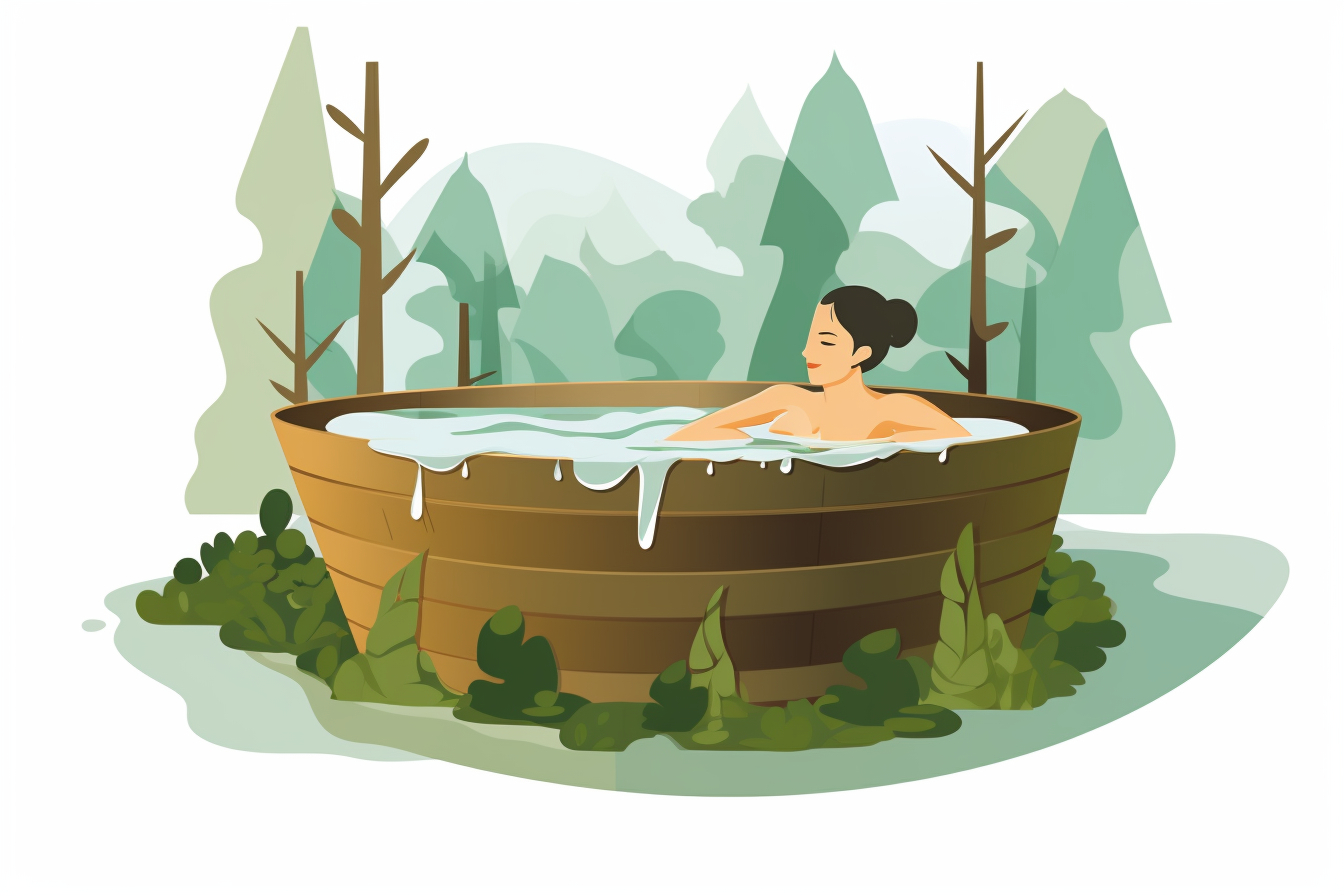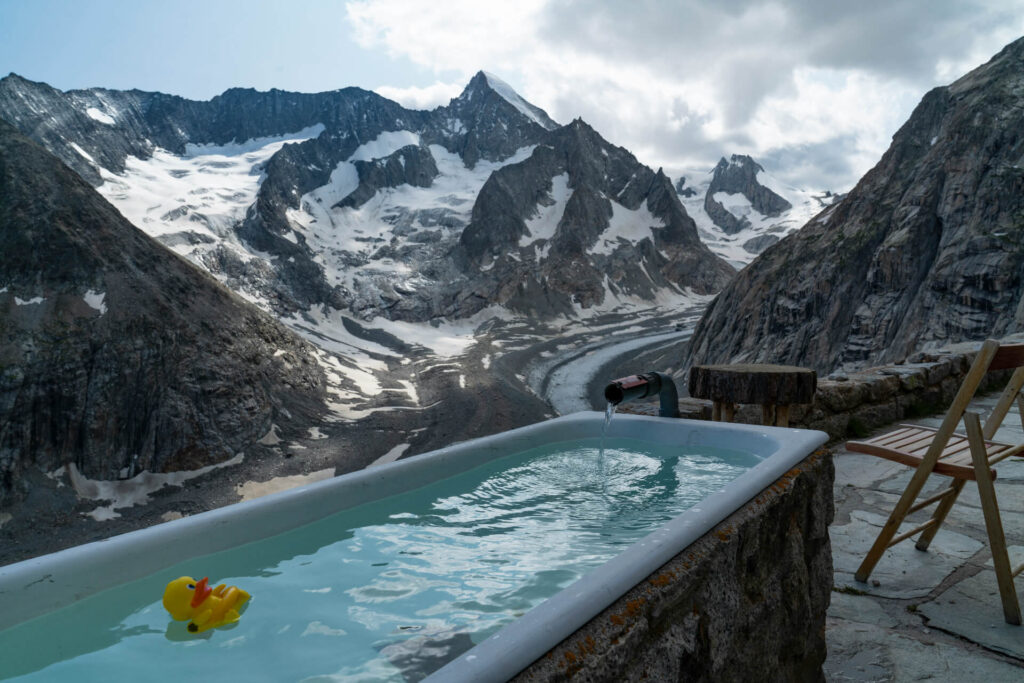
Body + Mind is reader-supported. We may earn an affiliate commission when you buy through some of the links on our site.
The Wim Hof method has become pop culture, which is paired with a fascination for ice baths. There is a reason people are doing something that sounds so distressing — ice bath benefits are monumental. Learn how long you should stay in an ice bath to get all of the advantages. Trust us — it’s worth it, even though it feels like it stings in the beginning.
Let’s start with what an ice bath actually is. It is not a specific piece of technology or a bathtub separate from your current shower — though some people go this extra mile. It goes by several other names, including cryotherapy and cold water immersion. An ice bath is the act of submerging yourself in cool water, ranging between 50 and 59°F — not a degree warmer.

Doing this regularly promises mental and physical health benefits compared to the comfort of warm water. You can create an ice bath simply by filling a tub with cool water and using a thermometer to figure out if it’s the right temperature. Slowly ease yourself into the freezing waters. Steel yourself and trust the process so you can obtain the benefits of an ice bath.
How long should you stay in an ice bath? Because the cold is quite extreme compared to what most people are accustomed to, do not go longer than 10 or 15 minutes. Always listen to the body, and if you are in discomfort or pain, exit the bath immediately and seek advice from a medical professional if unease persists.
Knowing how the process works, what does this unpleasant-sounding habit promise for a healthier body and mind?
People love taking a cold dip after working out. Why? The immersion provides analgesic effects for relieving pain and assisting in post-workout recovery. This logic translates for people experiencing other types of pain as well, though it may not work for everyone. The water provides a numbing blanket over pain points, making it feel less intense. The body and nerves exclusively focus on the cold.
Consider how people place a bag of peas over a swollen area — it’s the same idea. The exposure may reduce inflammation and pain caused by swelling. It does this by slowing blood flow to these pained regions. Individuals with chronic back pain or ailments like rheumatoid arthritis may want to try this in a safe setting.
How can cold water help you stay awake and fall asleep at the same time? A 2023 study used MRIs to see how the brain reacted to cold water immersion. The session lit up the brain, making it feel more alert and inspired. The feeling might be comparable to the first dose of caffeine in a day. Simultaneously, people felt reduced distress.
Decreased stress translates into the evening, making it easier to fall asleep. Studies show cold therapy is ideal for aligning circadian rhythms and inducing a sense of calm. People using ice baths could do sessions in the morning or evening to help with whatever energy issue they’re most concerned about.

Everything from puzzle games to going to school trains the mind in different ways. However, dipping yourself willingly into cold water for an extended period of time is a new test of resilience. It requires willpower and grit to sit there, even if you don’t get used to the chilling temperatures.
The shock startles the sympathetic nervous system, making you believe you want to get out of the bath as fast as possible. If you stay, it’s like training a muscle with any other workout — except it’s your mind. Repeated ice plunges make your mind stronger against stressors and rewire it to acknowledge when something isn’t necessarily a threat to your safety.
It also helps you process anxiety more rationally, because you’re constantly reassuring yourself you can withstand this test. The practice could improve deep breathing exercises and awareness while reducing depressive symptoms in some parties.
As mentioned above, the cold may heal muscles after an intense workout. It reduces swelling and throbbing from focusing on a muscle group, expediting your body’s healing response. Blood is trying to speed to these areas that were strained, which is what causes puffiness and discomfort. The cold slows this process down, delaying onset muscle soreness, especially in budding athletes or people who didn’t adequately prepare for their session.
Who doesn’t want youthful, glowing skin? People have been rolling cold jade on their faces for ages, and putting yourself in cold water offers the same effects of those massages on the rest of the body. Repeated dips in cold water calm puffy, irritated, dry and inflamed skin by forcing veins to constrict, reducing general redness and potentially rosacea. It may also soothe a sunburn if your body can handle the shocking chill on a warm, radiating body.
Please note you should not submerge your head under these cold waters for your safety. If you want to splash cool water on your face, this is fine — but keep your head above water.

Research proves how cold water immersion boosts plasma concentrations of catecholamines — what does this mean? They are a neurohormone that helps cells respond to stress, such as bacterial illness or other stressors. The more adept cells are at responding to immune system compromises like these, the better the immune system is altogether. Studies show it is effective at fighting respiratory infections and improving cardiovascular health.
Merging the plunges with mindfulness exercises that often accompany the habit is only going to add to the immune system boons.
Want ice bath benefits? Then, you’ll have to suffer through a few shivers. Ice baths are still being researched, and there are tons left to explore about the long-term effects of consistent, extended exposure to these cold waters. However, the early documents look promising. With the amount of viral attention it is getting, it may become more normalized then other self-care and fitness recovery trends — only time will tell.
Your email address will only be used to send you our newsletter, and at any time you may unsubscribe. For more information, see our Privacy Policy.